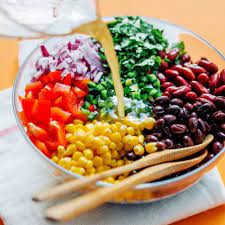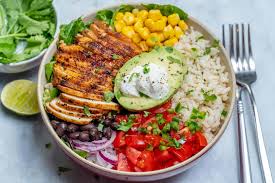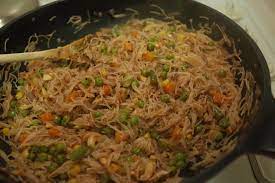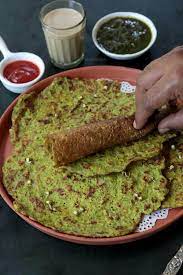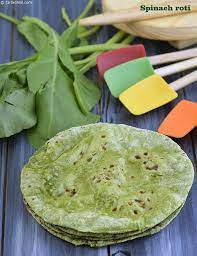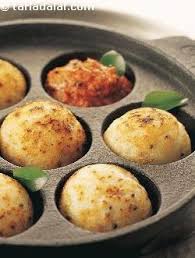Jagran Josh
Healthy food for school-age children: School-going children are prone to infections, diseases, and unhealthy eating habits. Since they spend a lot of their energy throughout the day, it is essential for school-age children to have a balanced diet and indulge in healthy food habits.
Balanced Diet for School Students: Kids spend most of their time performing activities that consume a lot of energy. To ensure that your child is healthy and is in a good development process, it is essential that he/she indulges in healthy food habits and takes a balanced diet every day.
With each passing day, we are progressing towards a lifestyle that is less inclined towards physical activities and more focused on easiness in activities. With a lack of physical exercise and playing habits in children, the rate of unhealthy lifestyles has increased manifold. Thus, to create a balance, students must consume healthy food. But, before knowing what kind of foods can be healthy for children, let us take a look at what a balanced diet is all about.
What is a Balanced Diet?
In simple meaning, a balanced diet is a diet that consists of a variety of food and provides sufficient nutrients to the body of an individual. A balanced diet is an amalgamation of various sources that our body needs for nourishment and development. Carbohydrates, Minerals, Protein, Vitamins, Fat, Fiber, and water are all part of a balanced diet. As we all know, eating healthy is not sufficient. In order to ensure that the food you eat gets digested properly and your body maintains a regular healthy fluid cycle, it is essential for humans to drink ample amounts of water in a day. Water is essential for hydration and water balance of the body of students irrespective of the amount of physical activities they indulge in, since good water intake results into good mood and positive thoughts, which is of utmost importance in today’s stressful and competitive life of students.
How can students maintain a balanced diet?
In order to maintain a balanced diet, a proper meal plan should be created by parents for their children. Also, the amount of intake of various nutrients should be kept in check. According to doctors and experts across the globe, we have attached a table that consists of details of relevant nutrients that should be consumed by children. Check the table below to know about the amount of nutrient intake in detail:
|
Nutrients |
Intake For Children of 1-3 years of age |
Intake For Children of 4-8 years of age |
Intake for children of 9-13 years of age |
Intake for children of 14-18 and above |
|
Vitamins |
Various forms of vitamins such as A, D, C, E, K, B in small amounts |
Various forms of vitamins such as A, D, C, E, K, B in small amounts |
Various forms of vitamins such as A, D, C, E, K, B in small amounts |
Various forms of vitamins such as A, D, C, E, K, B in small amounts |
|
Protein |
1.05 g/kg/day |
0.95 g/kg/day |
0.95 g/kg/day |
0.85 g/kg/day |
|
Minerals |
9.1-9.8 mg iron 1041-1050 mg calcium 6.9-7.3 mg zinc |
9.1-9.8 mg iron 1041-1050 mg calcium 6.9-7.3 mg zinc |
9.1-9.8 mg iron 1041-1050 mg calcium 6.9-7.3 mg zinc |
9.1-9.8 mg iron 1041-1050 mg calcium 6.9-7.3 mg zinc |
|
Carbohydrates |
80 Kcal/kg/day |
60-70 Kcal/kg/day |
35-45 Kcal/kg/day |
35-45 Kcal/kg/day |
|
Fiber |
10.5-11.3 g/d |
12.0-13.7 g/d |
12.0-13.7 g/d |
13.3-14.9 g/d |
|
Water |
1.3 litres a day |
1.7 litres a day |
2.1-2.4 litres a day |
2.2-3.3 litres a day |
Source: Majorly from the National Institutes of Health
If children are fed these amounts of mentioned nutrients in a day, then the motive of a balanced diet can be achieved. The amount of these nutrients can vary in a day but it is important to include these mentioned nutrients in your child’s diet.
Expert Talk

Manveer Kaur- Nutritionist/Dietician
“In nutrition and lifestyle counselling for more than 20 years. I believe that nutrition is the foundation of a healthy life, and I am dedicated to empowering my clients with the knowledge and tools they need to make informed and sustainable choices.”
We interviewed a nutritionist and dietician, Manveer Kaur, with over 20 years of experience in the industry. On asking about the value of a balanced diet and nutrition in school-going children, she said “It is crucial to promote informed and responsible dietary choices among young children and especially adolescents and help them develop a healthy relationship with food and their bodies. There is a new trend in teenage girls to be skinny and to be muscular in boys, from a very young age, and due to this teenagers are often susceptible to the allure of *fad diets* due to societal pressures, peer influence, and a desire for quick results. Fad diets can have detrimental effects on teenagers’ physical and mental health. They may experience fatigue, dizziness, hair loss, and mood swings. These diets can also lead to eating disorders, such as anorexia or bulimia. Teenagers need guidance from trusted adults, such as parents and educators, to understand the risks associated with fad diets. Teaching them about balanced nutrition and the importance of gradual, sustainable lifestyle changes is crucial.
She added “Along with that comes another challenge – Childhood obesity, it is a pressing health concern worldwide, and one of the significant contributors to this problem is the consumption of junk food by children. It does not only affect physical health and well-being but can also have a psychological impact, leading to low self-esteem, depression, and social isolation in some children.”
“So it is crucial for parents, caregivers, and schools to promote healthy eating habits, educate about health issues due to fad diets and also to limit the consumption of junk food in children’s diets. Encouraging the intake of whole, nutritious foods, emphasizing regular physical activity, and setting a positive example are essential steps to make our future generation to be physically and mentally healthy”, said Kaur.
Five Food Groups/ Healthy Diet Plan
In order to ensure that your child is having a properly balanced meal full of sufficient nutrients required for his/her nourishment, these five food groups must be included in various meals throughout the day.
1. Vegetables– The most important element of your child’s meal is vegetables. They are rich sources of iron, vitamins, antioxidants, fiber, and water. The more greens you add to your kid’s meal, the better nourishment he/she gets. Though students should have a habit of eating all vegetables it is important to focus on green and leafy vegetables since they are the biggest source of vitamins and minerals. The amount of veggies to be consumed can vary according to the weight, height, and age of children. It is best to include veggies in the dishes your child likes to eat.
2. Fruits– Fruits add flavor and fun to your dishes. Usually, fruits are readily eaten by students since they are sugary, sweet, and tangy in flavor. One meal of fruit is enough for children in a day. The best time to consume fruits is morning. So, it is advised that your child’s breakfast consists of at least 1 cup of fruit. They provide a sufficient amount of vitamins and minerals to the body while still maintaining that yummy and juicy flavor.
3. Dairy Products– The biggest source of calcium is milk and various other dairy products. School-going children should drink 2 glasses of milk every day. Their lunch can be accompanied by curd, buttermilk, or any other dairy product that the child likes so that he/she does not miss out on that extra dose of calcium. Calcium ensures that your bones and teeth are strong and healthy.
4. Grains– Grains are important to maintain the cholesterol level in our bodies, improve digestion, and boost the overall immunity in children. There are various forms of grains produced in India and each of them imparts various additional nutritional values. Students can be fed whole grains through oats, flour, and other sources.
5. Proteins– Protein is again an important ingredient of your meal which repairs your cells and produces new ones. They are known as the building blocks of life. In order to maintain the energy and muscle strength of your child, the consumption of protein is essential. Eggs, Chicken, Milk, Beans, Tofu, and Lentils are rich sources of proteins.
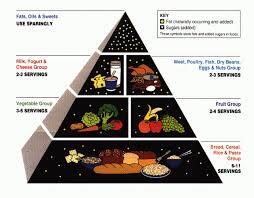
Source: Wikipedia
Healthy Eating Habits in Children
- Drink a lot of water
- The food you eat should be of at least five different colors. For example: Students can eat various fruits and green leafy vegetables. A good combination of colors ensures that you have consumed a variety of nutrients with different nutritious values
- Never skip your breakfast
- Chew your bite at least 32 times
- Do not swallow your food
- Eat what you like but customize it in a way that it becomes healthy
- Do not supplement your meals with snacks. Always take your full meals
- Do not overeat
- Try out new things
- Avoid eating in front of your screens
- Avoid packaged and preserved food
Top 10 Healthy Tiffin Ideas for School Students
1. Cucumber Sandwich

Source: Eating Well
2. Bean Salad
Source: Live Eat Learn
3. Stuffed Vegetable Rolls
Source: Dreamztime
4. Burrito Bowl
Source: Healthy Fitness Meals
5. Fruit Sticks
Source: Stock
6. Vermecilli Chowmein
Source: Food 52
7. Vegetable Fried Rice
Source: The Daily Meal
8. Sprouted Vegetable Indian Pancake (Chilla)
Source: MasalaChilli
9. Palak/Beetroot Chapati with yummy Aloo Curry
Source: Pinterest
10. Semolina Vegetable Balls
Source: Pinterest
#Healthy #food #schoolage #children #Find #Healthy #Food #Habits #Tiffin #Ideas

